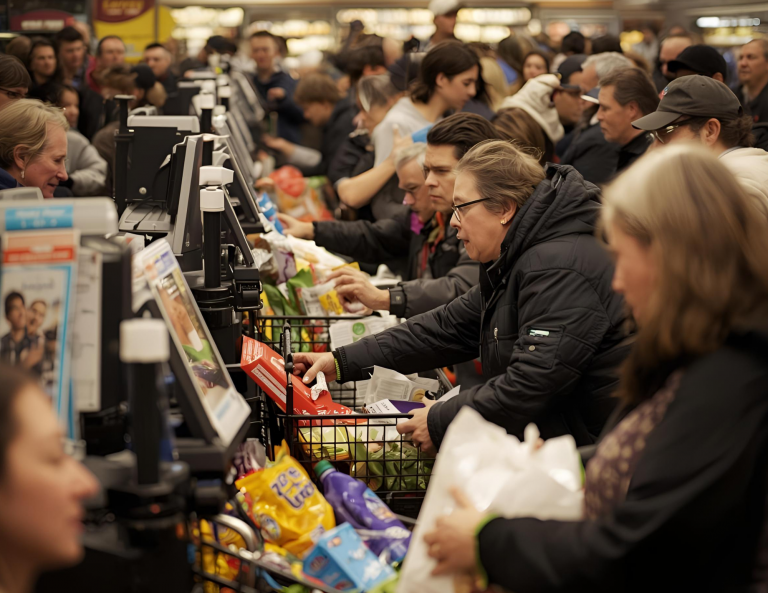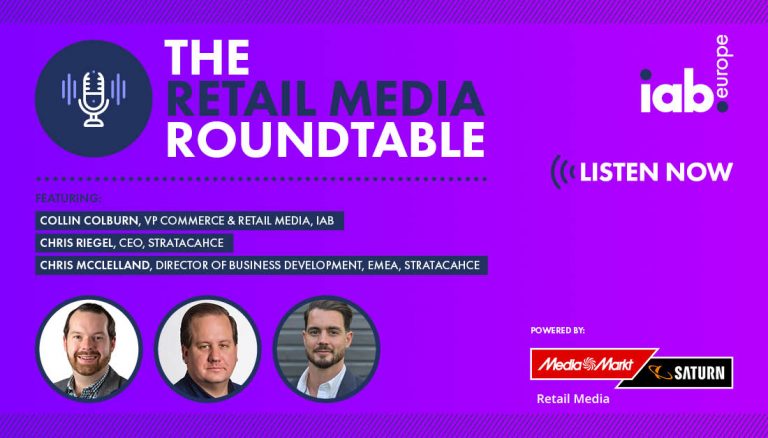The Retail Media Measurement Breakfast in Cannes was one of the most anticipated sessions of Cannes 2025. Moderated by EMARKETER Principal Analyst Sarah Marzano, the discussion brought together voices from across the ecosystem — Collin Colburn, VP of Commerce and Retail Media at IAB, Liz Roche VP of Media and Measurement at Albertsons Media Collective, and Ben Reynolds, VP of Business Development at Walkbase — to explore the evolving landscape of in-store measurement, data fidelity, and the broader implications of for retail media growth.
The takeaway? In-store retail media is no longer just about potential — it’s moving swiftly into measurable, scalable execution. For brands, that means the ability to deploy campaigns across thousands of stores with consistent creative and clear attribution. For retailers, it means operational systems that support dynamic content delivery. And for shoppers, it means relevant, timely messages that actually enhance the in-store experience.
From “Black Box” to Accountability
Historically, in-store retail media was treated as a measurement “black box”, something difficult to quantify and challenging to integrate into omnichannel strategy. But that’s changing rapidly. As Marzano cited from EMARKETER’s forecasts, in-store digital retail media ad spend is expected to more than double between now and 2029 — from $430 million to more than $1 billion.
That growth, the panel agreed, is driven by two factors. One more obvious reason, the increase of digital screens in physical locations. And two, by the increasing precision of in-store measurement such as granular attention signals, closed-loop attribution, and privacy-conscious shopper journey tracking.
“We’ve always had the gut feeling that in-store works,” said Liz Roche of Albertsons Media Collective. “But now we’re at a point where we’re starting to prove it. We’re closing the loop between impressions and transactions, sometimes even within the same trip.”
New Tools, New Standards
Ben Reynolds of Walkbase highlighted the technological breakthroughs making this shift possible. He emphasized how advanced, privacy-friendly sensors, such as Walkbase millimeter wave technology, are unlocking a deeper level of in-store analytics without capturing protected biometric data.
“You want to measure engagement by screen and by ad unit,” Reynolds explained. “Then go further: Where did that shopper come from? Where are they going next? And did we change behavior?”
Walkbase, which has long tracked customer movement and dwell time in retail environments, is now helping retailers build that layer of understanding into retail media ecosystems. “This data,” Reynolds said, “is not just about screens, it’s about reshaping the entire store experience.”
Critically, Reynolds also noted the importance of measurement infrastructure aligning with consumer privacy expectations, citing GDPR and stricter U.S. state laws as guiding principles for data collection. “You can’t build long-term partnerships on estimates. Rigorous measurement is the foundation.”
The Data Behind the Behavior
One of the most compelling aspects of the discussion was how in-store data is now informing far more than retail media performance. It’s also reshaping retail operations — from store layout to inventory placement to the creative used in digital signage.
Reynolds pointed out that Walkbase technology can identify underperforming high-traffic areas in-store, equating it to identifying low-conversion zones on an ecommerce site. “With millions of observation points per store per day, retailers are gaining new behavioral insights that drive real operational change.”
And this behavioral data is now extending beyond store walls. When connected with loyalty programs and identity resolution platforms, retailers and brands can use in-store insights to inform offsite media ( like social or connected TV ) with far greater relevance.
Connecting Retailer, Brand, and Shopper
The panelists stressed that successful in-store retail media hinges not just on tech or strategy, but collaboration, particularly in how brand and retailer relationships evolve.
“We’re starting to see the end of siloed budgets,” said Roche. “It’s not shopper dollars vs. brand dollars. It’s about joint growth. And that means educating everyone involved, from sales teams to store managers, and inviting them into the process.”
Reynolds echoed that sentiment, adding that the transition to in-store retail media maturity will be “a crawl-walk-run” journey. “But the most important thing is to start. Once the data starts flowing, the insights follow.”
The Road Ahead: Making Measurement Matter
Each panelist reflected on near-term priorities. For Walkbase, it’s about helping partners activate at scale and normalize rigorous measurement. For Albertsons Media Collective, it’s about showing internal stakeholders and brand partners that the investment is paying off in clear, store-level business terms.
As Colburn from IAB noted, in-store retail media is uniquely positioned to bridge long-standing gaps between commerce and brand marketing. “The store might just be the spark that rewrites how retailers and brands work together,” he said.
And with tools like those from Walkbase providing real-time, location-aware analytics, that future isn’t far off –it’s already underway.
Ready to learn more? Contact Walkbase today to discover how our solutions can transform your in-store retail media strategy.



